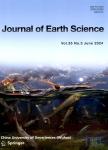New Discovery of the Jinshui Tin Deposit in the Middle Section of the East Kunlun Orogenic Belt,Northwestern China:Mineralization Age and Exploration Significance
作者机构:State Key Laboratory of Geological Processes and Mineral ResourcesCollaborative Innovation Center for Exploration of Strategic Mineral ResourcesSchool of Earth ResourcesChina University of GeosciencesWuhan 430074China Third Geological Exploration Institute of Qinghai Nonferrous Geological and Mineral Exploration BureauXining 810000China
出 版 物:《Journal of Earth Science》 (地球科学学刊(英文版))
年 卷 期:2024年第35卷第4期
页 面:1373-1377页
核心收录:
学科分类:081803[工学-地质工程] 08[工学] 0818[工学-地质资源与地质工程]
基 金:financially supported by projects from the National Natural Science Foundation of China (Nos. 92162323, 42321001) the Qinghai Provincial Non-ferrous Metal Geological and Minerals Exploration Bureau (No.2023jgky01) the Kunlun Talents project of Qinghai Province (2023)
主 题:Middle northeastern southwestern
摘 要:Tin,as one of the most important critical metals,has at-tracted great attention worldwide(Jiang et al.,2023,2020).China has the largest amount of tin resources in the world,ac-counting for nearly one-fourth of the world’s total(Jiang et al.,2020;Chen and Sheng,2015).Tin deposits in China mainly occur in the Nanling Range in southern China,the Sanjiang Basin in southwestern China,and the Great Xing’an Range in northeastern China,which account for 98%of the country’s tin resources,whereas tin deposits are relatively rare in north-western China(Ni et al.,2023;Chen et al.,2014,1992).



